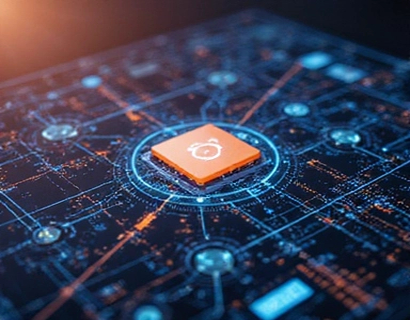Exploring the Frontiers of Nanotechnology: Insights for Educators and Enthusiasts
In the rapidly evolving landscape of modern technology, nanotechnology stands out as a field with immense potential and profound implications. This article delves into the world of nanobots, providing expert insights that are both verified and accessible, particularly for educators, professionals, and students. Through an innovative AI chat platform, users can engage with specialized information about nanobot technology in a secure and child-friendly environment.
Understanding Nanobots
Nanobots, or nanorobots, are microscopic machines designed to perform specific tasks at the nanoscale, which is one billionth of a meter. These tiny devices are engineered to manipulate matter at the atomic and molecular level, opening up a myriad of possibilities in various fields such as medicine, manufacturing, and environmental science. The concept of nanobots has been a staple of science fiction for decades, but recent advancements have brought this once-futuristic idea closer to reality.
Expert Insights on Nanobot Technology
The development of nanobots involves interdisciplinary knowledge from physics, chemistry, biology, and engineering. Experts in the field emphasize the importance of a solid foundation in these areas to fully understand the capabilities and potential applications of nanobot technology. One of the key areas of focus is the miniaturization of components, which requires innovative materials and manufacturing techniques. Another critical aspect is the power supply and control mechanisms for these tiny machines, which must be efficient and reliable.
Applications of Nanobots
Nanobots have a wide range of potential applications, each with its own set of challenges and benefits. In medicine, nanobots could revolutionize healthcare by enabling precise drug delivery, targeted cancer treatment, and real-time monitoring of bodily functions. For instance, nanobots could be designed to navigate through the bloodstream, identifying and destroying cancer cells while minimizing damage to healthy tissue. This targeted approach could significantly reduce the side effects associated with traditional treatments.
In the field of manufacturing, nanobots could enhance precision and efficiency, leading to the production of higher-quality goods at a lower cost. They could be used to assemble complex structures at the molecular level, creating materials with superior properties. Environmental applications include the cleanup of pollutants and the development of sustainable energy solutions. Nanobots could help in breaking down toxic substances in the environment or in improving the efficiency of solar cells and batteries.
Challenges and Considerations
Despite the promising prospects, the development and deployment of nanobots come with significant challenges. One of the primary concerns is the potential risks to human health and the environment. Ensuring that nanobots are biocompatible and do not cause unintended harm is crucial. Additionally, the ethical implications of using such technology must be carefully considered, including issues related to privacy, security, and the potential for misuse.
Another challenge is the technical complexity involved in designing and controlling nanobots. The miniaturization of components and the development of miniaturized power sources and communication systems are major hurdles that researchers are actively working to overcome. Collaboration between academia, industry, and government is essential to address these challenges and to establish regulatory frameworks that ensure safe and responsible use of nanobot technology.
Educational Resources and Learning Opportunities
For educators and enthusiasts looking to delve deeper into the world of nanobots, there are numerous resources available. Online courses, research papers, and interactive simulations can provide a comprehensive understanding of the subject. An AI chat platform designed for educational purposes offers a unique opportunity to engage with expert insights in a secure and child-friendly environment. This platform can serve as a valuable tool for teachers to integrate cutting-edge technology into their curricula, fostering a deeper interest in STEM fields among students.
The AI chat interface is designed to provide verified information, ensuring that users receive accurate and up-to-date content. The platform can adapt to different learning levels, offering simplified explanations for younger audiences and more detailed information for advanced learners. This approach makes complex topics accessible to a broader range of users, promoting inclusive education.
Interactive Learning with AI
The AI chat platform offers an interactive learning experience that goes beyond traditional educational methods. Users can ask questions, receive instant responses, and engage in conversations that simulate real-world scenarios. For example, a student could ask about the potential uses of nanobots in medicine and receive a detailed explanation, including examples of current research and future possibilities. This interactive approach not only enhances understanding but also stimulates curiosity and critical thinking.
Moreover, the platform can incorporate gamification elements to make learning more engaging. Quizzes, puzzles, and interactive simulations can help reinforce key concepts and keep students motivated. For educators, the platform provides valuable insights into student engagement and understanding, allowing for personalized instruction and support.
Child-Friendly Features
Recognizing the importance of making advanced topics accessible to children, the AI chat platform includes features specifically designed for younger users. The child-friendly version of the platform uses age-appropriate language, visuals, and examples to explain complex concepts. Safety measures are in place to ensure a secure and positive learning environment, with strict controls on user interactions and content filtering to prevent exposure to inappropriate material.
Parents and educators can rest assured that the platform adheres to strict privacy standards, complying with regulations such as COPPA (Children's Online Privacy Protection Act). This commitment to safety and education makes the platform a trusted resource for introducing children to the wonders of nanotechnology.
Future Prospects and Innovations
As research in nanotechnology continues to advance, the potential applications of nanobots are likely to expand even further. Future innovations may include more sophisticated control systems, improved biocompatibility, and the integration of artificial intelligence to enhance the capabilities of nanobots. The development of swarm technology, where multiple nanobots work together to achieve complex tasks, is another area of active research with significant implications for various industries.
Educators and enthusiasts can stay updated on the latest developments by following reputable sources and participating in online communities. The AI chat platform can serve as a hub for sharing news, research findings, and educational resources, fostering a community of learners and professionals dedicated to advancing the field of nanotechnology.
Conclusion
Nanobot technology represents a frontier of innovation with the potential to transform multiple aspects of our lives. Through expert insights provided by an AI chat platform, educators and enthusiasts can gain a deeper understanding of this exciting field. The platform's commitment to verified information and child-friendly learning ensures that the knowledge is accessible and safe for all users. As we continue to explore the possibilities of nanobots, the importance of education and responsible innovation cannot be overstated.











































